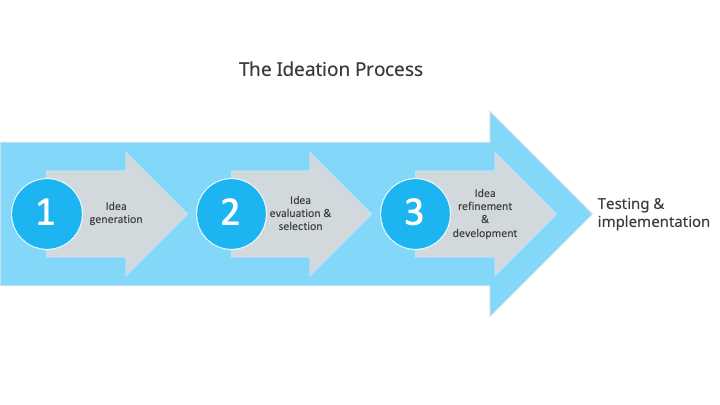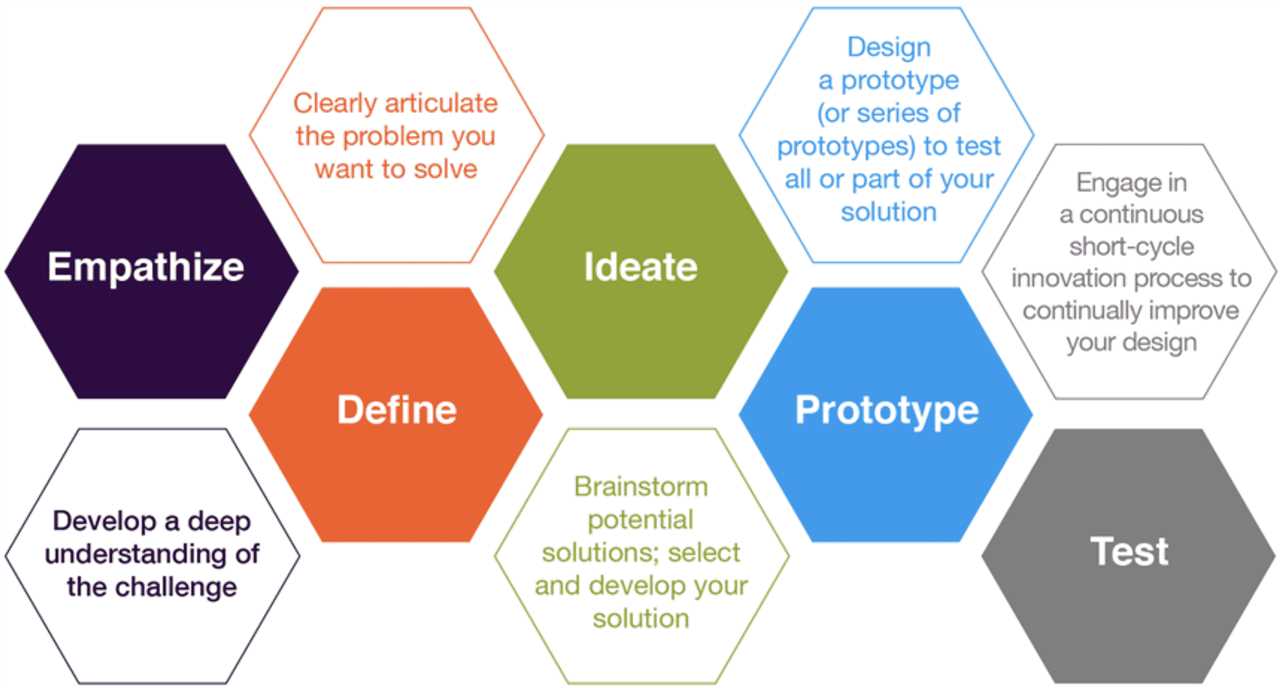What Is an Ideation: Definition, Process, and How It Works
Ideation is the process of generating, developing, and refining ideas to solve a problem or create new opportunities. It is a crucial step in the innovation process and plays a significant role in driving business growth and success.
The ideation process typically involves brainstorming sessions, where individuals or teams come together to generate a wide range of ideas. These ideas can be related to product development, process improvement, marketing strategies, or any other aspect of the business.
During the ideation process, it is important to create an environment that encourages creativity and open-mindedness. This can be done by setting clear goals, providing relevant information, and fostering a culture of collaboration and idea sharing.
Once the ideas are generated, they go through a process of evaluation and refinement. This involves analyzing the feasibility, potential impact, and alignment with business objectives. The most promising ideas are further developed and transformed into actionable plans or projects.
Ideation can be facilitated through various techniques and tools, such as brainstorming sessions, mind mapping, SWOT analysis, or design thinking. These methods help to stimulate creativity, encourage diverse perspectives, and ensure a systematic approach to idea generation.
The benefits of ideation in business are numerous. It allows organizations to tap into the collective intelligence of their employees, fostering a culture of innovation and continuous improvement. It helps to identify new opportunities, solve complex problems, and stay ahead of the competition.
Implementing ideation in your business strategy requires a commitment to creating a supportive environment for idea generation and implementation. This includes providing resources, training, and incentives for employees to participate in the ideation process. It also involves establishing a feedback mechanism to evaluate the success of implemented ideas and learn from the outcomes.
Ideation is a crucial process in the world of business and innovation. It refers to the generation of new ideas and concepts that can lead to the development of innovative products, services, or solutions. It involves brainstorming, creative thinking, and problem-solving to come up with unique and valuable ideas.
The concept of ideation is based on the belief that innovation and success in business are driven by the ability to generate and implement new ideas. It is a process that encourages individuals and teams to think outside the box, challenge existing norms, and explore new possibilities.
Ideation can take various forms, such as brainstorming sessions, idea generation workshops, or individual creative thinking exercises. It often involves collaboration and the exchange of ideas among team members or participants. The goal is to generate a wide range of ideas, regardless of their feasibility or practicality, and then evaluate and refine them to identify the most promising ones.
During the ideation process, it is important to create an environment that fosters creativity and encourages open-mindedness. This can be achieved by creating a safe space where participants feel comfortable expressing their ideas, promoting a culture of curiosity and exploration, and providing the necessary resources and tools to support the ideation process.
Furthermore, ideation should not be limited to a one-time event or activity. It should be an ongoing process that is integrated into the overall business strategy. By continuously generating and evaluating new ideas, businesses can stay ahead of the competition, adapt to changing market conditions, and identify opportunities for growth and improvement.
The Process of Ideation
Ideation is a creative process that involves generating and developing new ideas or concepts. It is a crucial step in the innovation process, as it lays the foundation for the development of new products, services, or strategies. The process of ideation can be broken down into several key steps:
2. Gather information and insights: Once the problem is defined, it is important to gather as much information and insights as possible. This can be done through market research, customer interviews, competitor analysis, or any other method that provides valuable insights into the problem at hand. The more information you have, the better equipped you will be to come up with innovative ideas.
3. Brainstorming: Brainstorming is a key technique used in the ideation process. It involves generating a large number of ideas in a short amount of time, without judgment or criticism. The goal of brainstorming is to encourage free thinking and creativity, allowing for the exploration of a wide range of ideas, no matter how wild or unconventional they may seem.
4. Evaluate and refine ideas: Once a sufficient number of ideas have been generated, it is time to evaluate and refine them. This involves analyzing each idea based on its feasibility, viability, and desirability. Feasibility refers to the technical and resource constraints that may impact the implementation of the idea. Viability refers to the potential market demand and profitability of the idea. Desirability refers to the alignment of the idea with customer needs and preferences. By evaluating and refining ideas, you can identify the most promising ones to move forward with.
5. Prototype and test: After selecting the most promising ideas, it is important to create prototypes or mock-ups to test their feasibility and gather feedback. This can be done through user testing, focus groups, or any other method that allows you to gather insights from potential customers or users. By testing ideas early on, you can identify any potential flaws or areas for improvement before investing significant resources into their development.
Benefits of Ideation in Business

Ideation is a crucial process in business that can bring numerous benefits to an organization. By fostering a culture of ideation, companies can unlock new opportunities, drive innovation, and stay ahead of the competition. Here are some key benefits of incorporating ideation into your business strategy:
1. Enhanced Problem Solving
Ideation allows teams to think creatively and generate a wide range of ideas to solve complex problems. By encouraging brainstorming sessions and open discussions, businesses can tap into the collective intelligence of their employees and find innovative solutions. This can lead to more effective problem-solving and improved decision-making processes.
2. Increased Innovation
Ideation is the foundation of innovation. By encouraging employees to think outside the box and explore new possibilities, businesses can foster a culture of innovation. This can lead to the development of new products, services, and processes that can give the company a competitive edge in the market.
3. Employee Engagement and Empowerment
By involving employees in the ideation process, businesses can increase employee engagement and empowerment. When employees feel that their ideas are valued and that they have a say in the direction of the company, they are more likely to be motivated and committed to their work. This can result in higher productivity, improved job satisfaction, and reduced turnover rates.
5. Continuous Improvement
Ideation is not a one-time event but an ongoing process. By regularly seeking input and feedback from employees, customers, and other stakeholders, businesses can continuously improve their products, processes, and strategies. This iterative approach allows companies to adapt to changing market conditions, stay relevant, and drive long-term success.
Implementing Ideation in Your Business Strategy

Ideation is a crucial process in developing innovative ideas and solutions for your business. By implementing ideation in your business strategy, you can foster a creative and collaborative environment that encourages the generation of new ideas and promotes problem-solving.
1. Create a Culture of Innovation
Implementing ideation starts with creating a culture of innovation within your organization. This involves fostering an environment where employees feel empowered to share their ideas and are encouraged to think outside the box. Encourage open communication and provide platforms for idea-sharing, such as brainstorming sessions or suggestion boxes.
2. Establish Clear Goals and Objectives
Before implementing ideation, it is essential to establish clear goals and objectives for the process. Define what you hope to achieve through ideation and set specific targets. This will help guide the ideation process and ensure that the generated ideas align with your business strategy.
Tip: Consider involving key stakeholders in the goal-setting process to ensure their buy-in and alignment with the overall business strategy.
3. Provide Resources and Support
For ideation to be successful, it is crucial to provide the necessary resources and support to facilitate the process. This may include allocating dedicated time for ideation activities, providing access to relevant information and data, and offering training or workshops on creative thinking techniques.
4. Implement Idea Evaluation and Selection
Once ideas have been generated through the ideation process, it is important to have a structured approach for evaluating and selecting the most promising ones. Establish criteria for evaluating ideas, such as feasibility, potential impact, and alignment with business objectives. Implement a systematic process for reviewing and selecting ideas, involving relevant stakeholders and decision-makers.
5. Foster Collaboration and Cross-Functional Teams
Ideation can be enhanced by fostering collaboration and involving cross-functional teams. Encourage employees from different departments or areas of expertise to work together on ideation projects. This diversity of perspectives can lead to more innovative and comprehensive ideas.
6. Implement a Feedback Loop
Feedback is essential for continuous improvement and refinement of ideas. Implement a feedback loop where ideas are reviewed, refined, and developed further based on input from stakeholders and experts. This iterative process can help enhance the quality of ideas and increase the chances of successful implementation.

Emily Bibb simplifies finance through bestselling books and articles, bridging complex concepts for everyday understanding. Engaging audiences via social media, she shares insights for financial success. Active in seminars and philanthropy, Bibb aims to create a more financially informed society, driven by her passion for empowering others.
